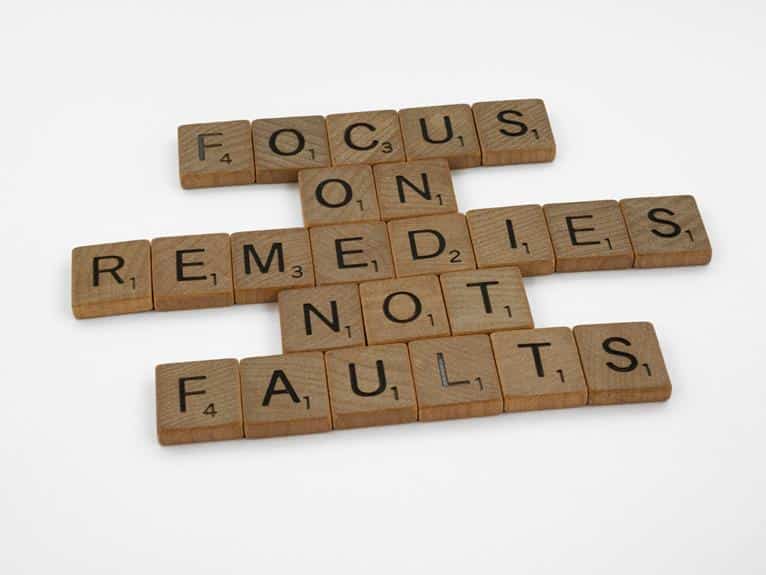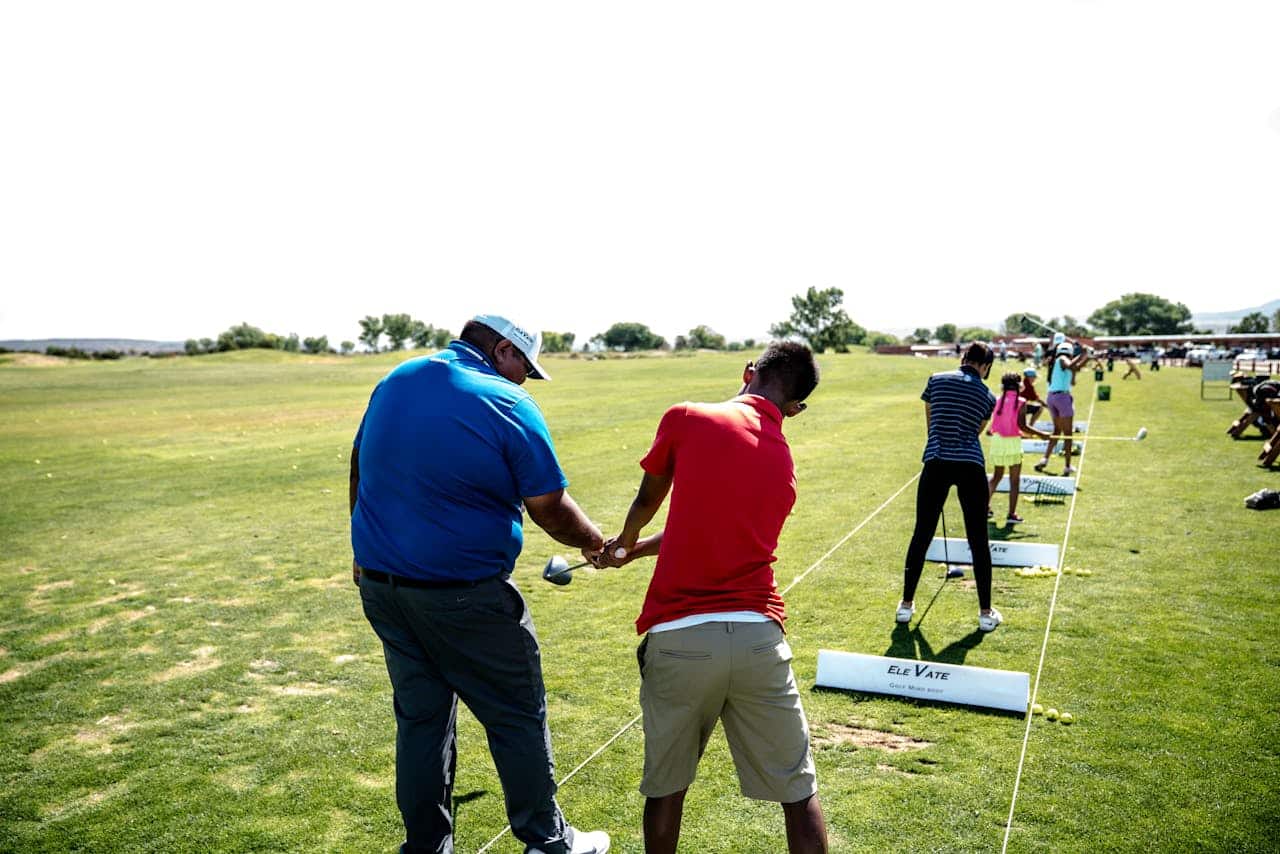
For as long as I can remember, my golf game was plagued by one persistent problem: an over the top golf swing. Whenever I stepped onto the course, my playing partners would cringe at the sight of it. My shots would slicing mercilessly right or barely skid along the fairway, giving me little to no distance and further diminishing my confidence with each swing.
It wasn’t just frustrating-it was demoralising. The question that tormented me was always “how could something so essential to golf be so elusive?” After years of battling this faulty swing, I finally set out on a journey to understand and correct it for good.
An over the top golf swing can wreak havoc on your game in several ways. When a golfer comes over the top, they cut across the ball from outside to inside, causing consistent slices and often resulting in a noticeable loss of power and distance.
This kind of swing fault not only affects accuracy but also undermines consistency-making every round more unpredictable than the last. For those who love the game as much as I do, there’s nothing more disheartening than realizing you’re doomed to repeat these same mistakes.
The importance of addressing this issue cannot be overstated. Whether you’re an amateur looking to lower your handicap or simply someone eager to enjoy more rounds without stress, fixing an over the top golf swing is critical for overall game improvement.
As I delved into understanding what causes this common fault and how best to address it, I found that making incremental changes led not only to better scores but also renewed joy in playing golf altogether. Through detailed analysis and methodical practice routines, I transformed my swing-and in turn-my entire golfing experience.
Understanding the Over the Top Golf Swing
What Is an Over the Top Golf Swing?
An over the top golf swing occurs when the club moves outside the desired swing path during the downswing, cutting across the ball from out to in. This results in a variety of undesirable shot shapes, predominantly slices and pulls.
The term “over the top” conveys how golfers often initiate their downswing with upper body dominance, causing a steep angle that disrupts a square clubface at impact. For many players, this manifests as frustratingly inconsistent shots and significant loss of power-something I definitely experienced when trying to figure out how i fixed my over the top golf swing.
Common Causes of an Over the Top Swing
Golfers develop this fault for numerous reasons, many of which are rooted in flawed fundamentals or poor habits developed over time. A common cause is an improper weight shift during the swing where too much emphasis is placed on using the shoulders instead of allowing natural hip rotation and lower body movement.
Additionally, an overly strong grip can guide one into pulling through with excessive force, exaggerating downward pressure on release. Professional instruction often reveals these subtleties, highlighting just how crucial proper mechanics are.
Impact on Ball Flight and Performance
The consequences of an over-the-top swing extend beyond aesthetics; they have a profound impact on ball flight. Slices occur because this flawed path leaves your clubface open relative to your trajectory at impact-leading to that rightward curve (for right-handed golfers).
Furthermore, since you aren’t striking down or through with optimal alignment, any energy intended for distance dissipates inefficiently upon contact. Once I learned about these dynamics while focusing on how i fixed my over-the-top golf swing, it clarified why changing gears was indispensable for reclaiming consistency and driving distance improvements as part of overall performance enhancement.
Self-Assessment
One of the first steps to correcting an over the top golf swing is recognising whether you truly have the issue. For many golfers, it can be difficult to determine this without proper self-assessment. A routine method for diagnosing an over the top swing involves paying attention to specific indicators such as ball flight patterns, divot direction, and overall consistency in your shots.
First, examine your ball flight closely. Golfers with an over the top swing typically experience slices-especially if they are right-handed golfers who notice their shots consistently veering off to the right. Another indicator is a significant loss of distance; due to improper angles at impact, power is frequently lost in this type of swing fault.
Lastly, monitor where your divots are landing on the course or driving range. If they consistently point left of your target line (again talking for right-handed players), it’s a strong sign that you’re coming over the top.
For a clearer self-diagnosis, video analysis tools come in handy. Recording your swing from multiple angles allows you to slow down and carefully observe your club path during both backswing and downswing phases.
When watching these recordings frame by frame, notice if your hands and club move in an outside-to-inside path relative to the target line on the downswing; this movement is characteristic of an over-the-top motion. It’s important to recognise these signs before you can begin making meaningful corrections-this initial step was crucial in how I fixed my over the top golf swing.
In addition to visual self-assessment techniques, physical feedback mechanisms can also aid in diagnosis. Try using alignment sticks during practice sessions-placing one along your feet’s target line and another parallel outside the ball will help highlight any deviations in your swing path visually or perceptually through tactile feedback when striking them incorrectly. Learning about these subtle cues builds an understanding necessary for acknowledging areas needing improvement effectively.
- Examine ball flight: Look for consistent slices or reduced distances.
- Check divot direction: Over-the-top swings often send divots left (for righties).
- Video analysis: Record swings from various angles to observe hand and club paths.
- Use alignment sticks: Set them up during practice sessions for immediate feedback.
Identifying these key indicators through self-assessment doesn’t just help confirm that you have an over-the-top swing; it also lays down a blueprint for targeted corrective actions moving forward.
Initial Adjustments
Making small adjustments formed the foundation of how I fixed my over the top golf swing. Initially, I focused on altering my grip and stance as these are fundamental elements that could spell the difference between executing a successful or flawed swing.
By slightly modifying how I held the club, it significantly improved the angle of my swing path. Placing more attention on having a neutral grip ensured that my hands were neither too strong nor weak, which helped in making my swings more consistent.
Alongside adjusting the grip, making minor tweaks to my stance played an essential role in correcting my over-the-top swing. By widening my stance and ensuring a balanced weight distribution between both feet, I managed to stabilise myself better during practice swings. Additionally, aligning my shoulders parallel to the target line promoted a more accurate swing path instead of swinging over the top. These seemingly small modifications had a profound impact, laying down a solid framework for further improvements.
| Adjustment | Details |
|---|---|
| Grip Modification | Switched to neutral grip for consistency. |
| Stance Tweaks | Widened stance and aligned shoulders parallel to target line. |
| Pump Drill | Performed half-swings focusing on smooth transitions to develop muscle memory. |
By incorporating these initial changes into my routine, not only did I observe significant progress but it also motivated me to keep pushing towards mastering my golfing technique. Minor adjustments can indeed lead to major improvements when addressing issues like an over-the-top golf swing.
Swing Drills
To tackle my over the top golf swing, targeted exercises became pivotal in recalibrating my muscle memory and correcting my swing path. The first drill that aided me significantly was the “Swing Plane Alignment Stick Drill.” Here’s how it works: you place an alignment stick into the ground at a 45-degree angle, mimicking the shaft of your club at address.
As you take your backswing, the goal is to ensure your hands pass under the alignment stick, signaling that you’re keeping your swing on plane instead of coming over the top. This physical cue reinforces a steeper inside-out path necessary for a solid strike.
Another integral exercise that made a difference was the “Drop and Stop Drill.” This drill aims to teach golfers how to drop their hands and club on the correct plane during transition from backswing to downswing.
Begin by taking your normal stance and executing a half swing while concentrating on dropping your hands into the ‘slot’-a position lower and closer to your body-before accelerating through impact. Repetition here is key; by ingraining this movement pattern, I began noticing a reduction in slices as well as added power through better clubhead positioning.
In addition to these drills, incorporating feedback tools like video analysis can be highly beneficial. Recording yourself during practice sessions allows you to visually confirm whether you’re successfully following through with the drills.
For me, verifying progress through watching my form in playback reassured that I was indeed fixing my tendency to come over the top. Utilising tools such as mirrors or even having a practice buddy offer real-time feedback can contribute significantly toward mastering these corrective exercises catered specifically for an over the top golf swing issue.
Tools and exercises alone weren’t enough without consistency:
- Daily Practice: Commit time every day for focused practice.
- Progress Tracking: Monitor changes in ball flight and distance.
- Visual Cues: Use alignment sticks or mirrors for immediate feedback.
Integrating these key elements helped reinforce proper mechanics effectively, making overall corrections sustainable long-term.
Professional Help
Engaging with a professional golf coach can be one of the most transformative steps toward fixing your over the top golf swing. Coaches bring years of experience and a trained eye that can identify subtle issues in your swing mechanics that you might overlook.
For example, when I decided to seek professional help, my coach immediately noticed imbalances and improper angles contributing to my flawed swing. These were corrections I couldn’t have made on my own, no matter how many hours I spent practicing.
Utilising modern technology has also made coaching sessions far more effective. Many coaches now use video analysis software and motion capture systems to break down your swing frame by frame. Through this thorough examination, they can provide pinpoint feedback and show you exactly where things are going wrong.
I remember vividly how watching my swing in slow motion clarified so much-it was like a lightbulb moment. My coach used these techniques to show me the exact point at which my club would come over the top, leading to slices and loss of distance.
Additionally, professional coaching offers personalised drills optimised for your specific needs. Unlike generalised online tips or tutorials, these exercises are tailored specifically for you, whether you need to adjust your grip, stance, or overall body movement.
The key here is that a good coach will not only tell you what to do but explain why you’re doing it-this explanatory aspect helps in internalising these adjustments effectively. How i fixed my over the top golf swing fundamentally started with understanding these individualised insights from my coach.
| Aspect | Details |
|---|---|
| First Impressions | Coach identified subtle issues quickly |
| Technology Used | Video analysis and motion capture for detailed feedback |
| Personalized Drills | Exercises designed specifically for individual weaknesses |
Practice Makes Perfect
Developing a consistent practice routine was critical in my journey to address the issues with my over the top golf swing. After learning various drills and techniques, integrating them into a regular practice schedule made all the difference. To stay on track, I allocated specific days of the week for practicing different aspects of my game, ensuring that each session had a clear focus and objective.
To start, I incorporated a structured warm-up routine that emphasised flexibility and strength training. This not only prepared my body but also helped engrain proper movement patterns before moving on to more complex drills. My warm-up included:
- Stretching exercises targeting key muscle groups used in the golf swing.
- Light cardio to increase blood flow and loosen muscles.
- Swing repetitions with an emphasis on slow motion to internalise correct form.
In addition to physical readiness, maintaining a detailed practice log proved invaluable. By writing down drills performed, progress made, and areas needing further attention, I could monitor my improvements and identify persistent issues. Here’s what my practice log typically included:
- Date and time of practice session
- Specific drills performed (e.g. split-handed swings)
- Observations on swing mechanics
- Notes on ball flight and consistency
- Goals for the next session
Finally, setting realistic milestones kept me motivated and focused throughout this process. Rather than expecting overnight success, I recognised that overcoming ingrained habits like an over the top swing required patience and persistence. Celebrating small victories-such as hitting fewer slices or achieving more accurate ball flights-reinforced positive behaviours and encouraged continued dedication.
Reflecting on how I fixed my over the top golf swing by sticking to a diligent routine serves as proof that consistent effort pays off remarkably well in golf improvement efforts.
Mental Focus
While it’s crucial to address the physical aspects of an over the top golf swing, the mental game is equally important. The journey of how I fixed my over the top golf swing was as mentally challenging as it was technical. Negative thoughts and frustration often cloud your judgment and deter you from making consistent improvements.
To combat this, I started by incorporating positive affirmations into my practice routine. Every time I felt myself slipping back into bad habits or becoming frustrated with slow progress, a simple reassurance like “I am capable of improvement” helped keep my mindset focused and positive.
Visualisation techniques played a key role in reinforcing new habits. Before each practice session, I’d spend a few minutes visualising a perfect swing path, seeing the ball take off straight down the fairway in my mind’s eye. This mental rehearsal creates a neurological pathway that can aid in physically executing the correct movement patterns during actual swings. Experts recommend dedicating at least 5-10 minutes before practice sessions to visualisation exercises for optimal results.
Patience and persistence were perhaps the most vital psychological barriers to overcome. Amidst inevitable setbacks and plateaus, it’s easy to become discouraged and revert to ingrained bad habits. Keeping a detailed accountability journal made all the difference for me; tracking daily progress helped me celebrate minor victories that kept motivation levels high. By recognising small gains-such as reducing slice severity or hitting more consistent shots-it’s easier to stay committed to long-term goals.
| Mental Strategy | Details |
|---|---|
| Positive Affirmations | Keep thoughts focused on capability and improvement. |
| Visualization Techniques | Mentally rehearse perfect swings before practice. |
| Accountability Journal | Track daily progress to recognize small gains. |
On the Course
Maintaining New Mechanics Under Pressure
Taking changes from the practice range to the golf course is a significant leap and requires considerable focus. It’s one thing to experience improvement during practice, but under the pressure of an actual game, old habits can resurface.
When I was working on how i fixed my over the top golf swing, I made it a point to remind myself of the key adjustments I had learned. Before each shot, I would take a few moments to visualise my new swing path and mentally rehearse my improved biomechanics.
Your pre-shot routine becomes crucial in maintaining these changes during play. This routine should be consistent and deliberate, incorporating checkpoints for grip, stance, and takeaway that reinforce your corrections. By making this part of my routine second nature through extensive practice sessions, I found it easier to execute during a round.
Keeping Focus on Swing Adjustments
Focusing on specific swing adjustments without getting distracted by score or competition is another challenge you’ll face on the course. Initially, prioritise process over outcome. For example, concentrate more on executing the correct swinging action rather than where the ball lands after contact. This mindset shift helps to alleviate performance anxiety and keeps your attention anchored in the present moment.
I discovered that mental tricks like using trigger words could aid concentration. Words like “smooth” or “inside-out” were cues that brought me back to practicing proper form even when under pressure. Additionally, having a coach or knowledgeable friend observe your play can provide real-time feedback and keep you accountable.
Strategies for in-Game Adjustments
It’s also essential to have flexible strategies for adjusting mid-round if things don’t go as planned. Developing mini-routines such as taking deep breaths or walking away momentarily helps reset focus between shots. Keep a journal of what works and what doesn’t; this way you can develop personalised methods for staying calm and collected.
When transitioning from practice drills to actual play scenarios, think about playing more practice rounds that simulate tournament conditions. During these rounds, use all aspects you’ve worked on-from visualisation techniques to physical adjustments-to instil confidence in your new swing mechanics under various forms of competitive stress.
These strategies contributed massively when reflecting upon how i fixed my over the top golf swing and helped translate those improvements into tangible results-ultimately boosting both my performance and enjoyment of the game.
Results & Reflections
After months of dedicated practice and continual adjustments, the results I achieved were astonishing. How I fixed my over the top golf swing wasn’t an overnight miracle, but a gradual transformation that led to significant improvements both in my performance and enjoyment of the game.
One of the most gratifying changes was witnessing my once erratic slice evolve into a controlled, powerful drive. No longer did I fear winding up in the rough; instead, I confidently aimed for fairways and greens.
Statistical Evidence of Success
The numbers truly illustrate the impact of addressing my swing flaw. Before making these changes, my average driving distance hovered around 220 yards with a considerable curvature to the right.
Post-transformation, not only did my drives become straighter but they also gained notable length, averaging 250 yards-an increase that brought more birdie opportunities into play. Moreover, my accuracy improved dramatically; hitting over 70% of fairways compared to just 50% before the corrections meant fewer wasted strokes and better scoring chances.
Improved Scores and Confidence
Beyond measurable improvements like distance and accuracy, fixing my over the top golf swing tremendously boosted my confidence on the course. With a reliable swing at my disposal, I found myself paying more attention to strategic aspects of gameplay rather than worrying about every impending shot’s trajectory. This focus led directly to lower scores-breaking 80 consistently became a reality rather than a distant dream.
Encouragement for Others
Reflecting on this journey fills me with immense pride and satisfaction, knowing that perseverance indeed pays off. For anyone grappling with similar issues in their golf game, it’s essential to remain patient and committed throughout the process. The rewards extend beyond mere statistics; they manifest as newfound confidence and excitement each time you step onto the course. Addressing flaws head-on can transform not only your performance but also your overall experience with this wonderful game.
Conclusion
Embarking on the journey to fix an over the top golf swing is not just about enhancing your game, but also about personal growth and determination. Implementing minor adjustments, engaging in targeted drills, and seeking professional guidance have all been integral steps in my journey toward a more consistent and powerful swing. These efforts require patience and a willingness to embrace new techniques, but the rewards are undoubtedly worth the persistence.
Reflecting on my own experience, I can confidently state that how I fixed my over the top golf swing has transformed both my performance on the course and my enjoyment of the game. The frustration of erratic shots has given way to confidence in every stroke, resulting in better scores and a more fulfilling golfing experience. The initial struggle may seem overwhelming, but each small victory along the way builds momentum towards significant improvement.
For fellow golfers facing similar challenges, remember that dedication and consistency are key. Practice diligently, stay focused mentally, and never hesitate to seek expert advice when needed. Your path to a better swing might be fraught with obstacles, but with unwavering commitment, you can achieve amazing results and elevate your game to new heights. So celebrate every bit of progress and keep striving for excellence; your best golfing days are still ahead.
Frequently Asked Questions
How to Fix a Golf Swing Coming Over the Top?
To fix a golf swing that is coming over the top, focus on initiating the downswing with your lower body rather than your upper body. Practicing proper sequencing where the hips lead the movement can help correct this issue.
Ensuring that your hands and arms follow naturally allows for a more inside path to the ball, reducing the tendency to slice or pull shots due to an over-the-top motion.
How Do You Fix a Golf Overswing?
Fixing a golf overswing involves maintaining better control and tempo during your backswing. One technique is to shorten your backswing consciously by stopping when your left arm (for right-handed golfers) is parallel to the ground. This position ensures you maintain a compact turn, promoting consistency and preventing loss of balance and power generated from incorrect overswings.
What Causes You to Swing Over the Top?
Swinging over the top can be caused by a variety of issues including early use of shoulders, poor alignment, or incorrect weight distribution during setup. Often it happens when golfers start the downswing with their upper body instead of their lower body, leading to an outside-in swing path.
Mental stress or tension might also cause rushed movements where proper mechanics are abandoned in favor of quicker results.
How to Prevent Going Over the Top?
Preventing going over the top requires building a solid foundation with proper setup and stance alignment parallel to your target line.
Practicing drills that emphasise lagging with your lower body can also help; one example is swinging halfway back and then dropping into a strong hip turn before moving through impact with relaxed wrists, which encourages an inside-out swing path.
How Do You Fix Hitting the Top of the Ball?
Fixing hitting the top of the ball often comes down to ensuring you’re maintaining proper posture throughout your swing and not standing up prematurely before contact. Focus on keeping your head steady and staying down through impact while allowing your arms to extend naturally towards the target after striking the ball.
Additionally, setting up slightly behind for fairway woods can help in getting under the ball cleanly for more consistent contact.




